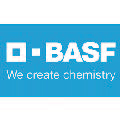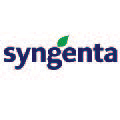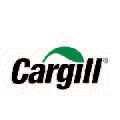
Overview
The agriculture industry offers non-contact temperature measurement and imaging capabilities. These devices utilize infrared technology to detect and capture thermal radiation emitted by objects, enabling farmers and agronomists to monitor and assess various aspects of crop health and environmental conditions. In agriculture, these tools find diverse applications such as detecting plant stress, assessing irrigation efficiency, monitoring livestock health, and identifying pest infestations. By precisely measuring surface temperatures, infrared thermometers assist in diagnosing plant diseases, optimizing water usage, and ensuring the proper functioning of agricultural machinery. Infrared cameras provide a visual representation of temperature differentials across fields, allowing for targeted interventions and timely decision-making. With their ability to quickly and accurately assess temperature variations in crops, soil, and livestock, infrared thermometers and cameras contribute significantly to improving yield, minimizing resource wastage, and promoting sustainable farming practices in the agriculture industry.
Depending on specific features and functions, GAO Tek’s Infrard thermometers and cameras are sometimes referred to as thermographic cameras, IR thermometers, thermal scanners, heat-sensing cameras, infrared imagers, temperature guns, thermal sensors, IR cameras, non-contact thermometers, thermal imaging systems.
Furthermore, GAO Tek’s Infrared thermometers and cameras are further grouped into:
Automotive, Data processing, Fire rescue, Handheld, Heavy duty, High accuracy, High performance, High precision, Industrial, Alarm, Auto power off, Avg record, Emissivity, Laser aiming, Medical, Non-contact, Outdoor, Rugged, Surface temperature, and Wireless
GAO Tek’s Infrared thermometers and cameras have the following applications in the agriculture industry:
- Crop Health Monitoring: GAO Tek’s infrared thermometers and cameras are used to detect early signs of stress or disease in crops by measuring surface temperatures. This enables timely intervention to mitigate potential damage and optimize crop health.
- Irrigation Management: GAO’s devices help in assessing the effectiveness of irrigation systems by monitoring soil temperature and moisture levels. This information aids in optimizing water usage and improving irrigation scheduling.
- Livestock Health Monitoring: GAO Tek’s infrared thermometers are utilized to monitor the health of livestock by measuring body temperatures without direct contact. This enables early detection of illnesses and prompt veterinary care.
- Pest Detection and Management: GAO Tek’s infrared cameras are employed to identify pest infestations in crops by detecting temperature differentials caused by their presence. This facilitates targeted pest control measures, minimizing crop damage and pesticide usage.
- Machinery Performance Monitoring: GAO Tek’s infrared thermometers are used to monitor the operating temperatures of agricultural machinery and equipment. This helps in identifying potential malfunctions or inefficiencies, ensuring optimal performance and reducing downtime.
- Environmental Monitoring: GAO’s tools are utilized to assess environmental conditions such as temperature variations across fields. This information aids in understanding microclimates, optimizing planting decisions, and mitigating risks associated with extreme weather events.
- Yield Optimization: GAO Tek’s infrared thermometers provide valuable insights into crop health, environmental conditions, and resource management, infrared thermometers and cameras contribute to optimizing crop yields and overall farm profitability.
More information on infrared thermometers and cameras and their applications in other industries can be found on
Infrared thermometers and cameras
This category page lists products related to
Systems in the Agriculture Industry Utilizing Infrared Thermometers and Cameras
Here are some popular systems in the agriculture industry using infrared thermometers and cameras:
Crop Health Monitoring System:
- This system integrates infrared thermometers and cameras to monitor the health of crops. It continuously measures surface temperatures and captures thermal images of plants to detect early signs of stress, disease, or pest infestations. Through real-time data analysis, farmers can make informed decisions regarding irrigation, fertilization, and pest control, thereby optimizing crop health and maximizing yields.
Precision Irrigation Management System:
- This system utilizes infrared thermometers and cameras to assess soil moisture levels and temperature variations across fields. By analyzing this data, farmers can precisely control irrigation scheduling and water distribution, ensuring efficient water usage and minimizing water wastage. Integrating infrared technology helps in accurately targeting irrigation where it is most needed, improving crop growth while conserving water resources.
Livestock Health Monitoring and Management System:
- Incorporating infrared thermometers, this system enables non-contact measurement of livestock body temperatures. By continuously monitoring temperature variations, it facilitates early detection of illnesses or infections in animals. Integrated with cameras, the system can also monitor livestock behavior and activity patterns, providing insights into their health and well-being. This proactive approach to livestock health management allows for timely veterinary interventions, reducing the risk of disease outbreaks and optimizing animal welfare.
Pest Detection and Control System:
- This system employs infrared cameras to detect temperature anomalies associated with pest infestations in crops. By capturing thermal images of fields, it identifies areas where pest activity is prevalent, enabling targeted pest control measures. Integrated with automated pest management solutions, the system can trigger timely interventions such as spraying or trapping, minimizing crop damage while reducing reliance on chemical pesticides. This enhances pest control efficacy while promoting environmentally sustainable farming practices.
Climate Monitoring and Control System:
- Utilizing infrared thermometers and cameras, this system monitors environmental conditions such as temperature and humidity levels within agricultural facilities such as greenhouses or livestock barns. Continuously monitoring these parameters, it ensures optimal growing conditions for crops or ideal living conditions for livestock. Integrated with climate control equipment, the system can adjust environmental parameters in real time, maintaining optimal conditions to maximize productivity and minimize stress on plants or animals.
Machinery Performance Monitoring System:
- This system incorporates infrared thermometers to monitor the operating temperatures of agricultural machinery and equipment. By continuously measuring key components’ temperatures, such as engines, bearings, and hydraulic systems, it can detect abnormalities indicative of potential malfunctions or inefficiencies. Integrated with predictive maintenance algorithms, the system alerts operators to impending issues, allowing for timely maintenance or repairs to prevent costly breakdowns and downtime. This proactive approach to machinery management enhances reliability, prolongs equipment lifespan, and optimizes operational efficiency on the farm.
Soil Health Assessment System:
- Integrating infrared thermometers and cameras, this system assesses soil health by analyzing temperature distributions and thermal properties. By measuring soil surface temperatures and thermal gradients, it provides insights into soil moisture levels, compaction, and nutrient distribution. Through data analytics and modeling, farmers can evaluate soil fertility, identify areas requiring amendments or tillage, and optimize crop planting decisions. This comprehensive approach to soil health assessment improves agronomic practices, enhances crop yields, and promotes long-term soil sustainability.
Crop Phenotyping and Breeding System:
- Leveraging infrared imaging technology, this system conducts phenotypic analysis of crops to support breeding programs and genetic research. By capturing detailed thermal images of plants at various growth stages, it quantifies physiological traits such as leaf temperature, transpiration rates, and canopy architecture. Integrated with advanced image processing algorithms, it facilitates high-throughput phenotyping, allowing breeders to identify desirable traits related to stress tolerance, yield potential, and disease resistance. This accelerates crop improvement efforts, enabling the development of new cultivars tailored to specific environmental conditions and market demands.
GAO Tek’s targeted markets are North America, particularly the U.S. and Canada.
Complying with Government Regulations
GAO Tek’s infrared thermometers and cameras comply or help our customers comply with the U.S. government regulations such as:
- FDA Food Safety Modernization Act (FSMA) regulations
- USDA National Organic Program (NOP) regulations
- Occupational Safety and Health Administration (OSHA) guidelines
- Environmental Protection Agency (EPA) regulations
- Food and Drug Administration (FDA) guidelines for food processing and storage
- Department of Transportation (DOT) regulations for transportation of agricultural products
- Federal Insecticide, Fungicide, and Rodenticide Act (FIFRA) regulations
- Animal Welfare Act regulations for livestock handling and transportation
- Federal Milk Marketing Order (FMMO) regulations for dairy products
- S. Department of Agriculture (USDA) regulations for labeling and packaging of agricultural products.
GAO Tek’s infrared thermometers and cameras comply or help our clients comply with Canadian regulations such as:
- Health Canada regulations
- Canadian Food Inspection Agency (CFIA) guidelines
- Environment and Climate Change Canada regulations
- Canadian Grain Commission (CGC) regulations
- Canadian Organic Standards regulations
- Transportation of Dangerous Goods (TDG) regulations
- Canadian Agricultural Products Act regulations
- Canadian Dairy Commission regulations
- Canadian Poultry and Egg Processors Council (CPEPC) guidelines
- Canadian Seed Institute regulations
Case Studies of Infrared Thermometers and Cameras in the Agriculture Industry
Infrared thermometers and cameras are sometimes called thermographic cameras, IR thermometers, thermal scanners, heat-sensing cameras, infrared imagers, temperature guns, thermal sensors, IR cameras, non-contact thermometers, and thermal imaging systems.
Here are some practical examples of using infrared thermometers and cameras in the agriculture industry:
In the Northeast region of New York, farmers utilize infrared thermometers and cameras for various agricultural applications. For instance, in orchards and vineyards, these tools help monitor tree and vine health by detecting temperature differentials associated with diseases like fire blight or powdery mildew.
In the Northeast region of Florida, infrared cameras are employed to assess barn ventilation efficiency and ensure optimal environmental conditions for herd comfort and productivity. Moreover, in precision agriculture, these technologies are integral for monitoring soil temperature and moisture levels, facilitating more precise irrigation and fertilization practices.
In the Northeast region of Pennsylvania, infrared cameras are also utilized for wildlife conservation efforts. Conservationists use these cameras to monitor animal populations and behaviors, particularly in remote or inaccessible areas.
In the Midwest region of Nebraska, infrared thermometers and cameras are indispensable tools for farmers across various agricultural sectors. In corn and soybean fields, these devices assist in the early detection of crop stress caused by factors like nutrient deficiencies or water scarcity, allowing for timely interventions to optimize yield potential.
In the Midwest region of Missouri, satellite imagery technology is leveraged for agricultural sustainability initiatives. Farmers and researchers use high-resolution satellite images to monitor crop health, detect pests and diseases, and optimize resource management practices such as irrigation and fertilization. This technology assists in enhancing crop yields, reducing environmental impact, and ensuring food security for the region.
In greenhouse operations, these technologies aid in fine-tuning environmental conditions for optimal plant growth and productivity. In summary, infrared thermometers and cameras play a pivotal role in enhancing agricultural efficiency and sustainability throughout the diverse agricultural landscape of the Midwest region of Florida.
In the Southern region of Georgia, infrared thermometers and cameras are extensively employed across various agricultural operations to address the unique challenges presented by the region’s climate and terrain. In citrus groves and vineyards, these tools are utilized to monitor tree and vine health, detecting early signs of stress or disease that may arise from factors like pests or fungal infections.
In the Southern region of Tennessee, unmanned aerial vehicles (UAVs), commonly known as drones, are increasingly utilized for precision farming practices. Farmers employ drones equipped with multispectral cameras to gather detailed aerial imagery of their fields.
In the Southern region of Carolina, advanced GPS technology is integrated into farm machinery to enable precision agriculture techniques. GPS-guided tractors and implements allow farmers to accurately plant seeds, apply fertilizers, and spray pesticides, minimizing overlap and ensuring even distribution across fields. This precise application helps conserve resources, reduce environmental impact, and maximize crop yields in the region’s diverse agricultural landscape.
In the West region of California, infrared thermometers and cameras are indispensable tools for addressing the unique agricultural challenges presented by the region’s diverse climates and landscapes. In vineyards and orchards, these tools are used to monitor plant health and detect diseases such as powdery mildew or botrytis, allowing for targeted interventions to prevent crop losses.
In the West region of Montana, remote sensing technology is widely employed for water management in agriculture. Satellite imagery and aerial drones equipped with sensors are utilized to monitor soil moisture levels, vegetation health, and water usage across vast agricultural landscapes.
In the West region of Alaska, precision agriculture techniques incorporating Global Positioning System (GPS) technology are extensively utilized to optimize farming practices. GPS-guided tractors and equipment enable farmers to precisely plant seeds, apply fertilizers, and manage crop inputs, resulting in reduced overlap and more efficient resource use. This technology helps enhance crop yields, conserve resources, and mitigate environmental impacts in the region’s diverse agricultural settings.
In the Canadian region of Ontario, particularly in provinces like Ontario and British Columbia, infrared thermometers and cameras are valuable assets in the agricultural sector, aiding farmers in tackling the challenges posed by the country’s diverse climates and vast agricultural landscapes.
In the Canadian region of Quebec, advanced weather monitoring systems are essential tools for agricultural resilience. Farmers utilize weather stations equipped with sensors to gather real-time data on temperature, humidity, precipitation, and wind patterns across their fields.
In the Canadian region of Columbia, Geographic Information System (GIS) technology is widely employed in agriculture for precision farming. Farmers utilize GIS mapping software to analyze various spatial data layers, including soil type, elevation, slope, and land use patterns.
GAO RFID Inc. RFID Hardware, a sister company of GAO Tek Inc., is ranked as a top 10 RFID suppliers in the world. Its RFID, BLE, and IoT products have also been widely used in the agriculture industry. Articles about related industries are given below:
Food and Beverage Manufacturing Industry
Agriculture, Forestry and Fisheries Industry
Use of Infrared Thermometers and Cameras with Leading Software and Cloud Services in the Agriculture Industry
GAO Tek has used or has facilitated its customers to use GAO’s infrared thermometers and cameras with some of the leading software and cloud services in their applications. Examples of such leading software and cloud services include:
- Farm management software
- Precision agriculture software
- Crop monitoring software
- Livestock management software
- Irrigation management software
- Weather forecasting services
- Remote sensing data platforms
- Agricultural drones and UAV software
- Supply chain management software
- Market analysis and trading platforms
- Soil health analysis software
- Pest and disease monitoring platforms
- Harvest planning and scheduling software
- Equipment maintenance and tracking systems
- Financial management software for farms
GAO Tek’s infrared thermometers and cameras and their applications in other industries are listed on
Infrared thermometers and cameras
Other related products can be found on this category page
Meeting Customers’ Demands
Large Choice of Products
In order to satisfy the diversified needs of their corporate customers, GAO Tek Inc. and its sister company GAO RFID Inc. together offer a wide choice of testing and measurement devices, network products, RFID, BLE, IoT, and drones.
Fast Delivery
To shorten the delivery to our customers, GAO has maintained a large stock of its products and can ship overnight within the continental U.S. and Canada from the nearest warehouse.
Local to Our Customers
We are in both the U.S. and Canada. We travel to customers’ premises if necessary. Hence, we provide very strong local support to our customers in North America, particularly the U.S. and Canada.
Furthermore, we have built partnerships with some integrators, consulting firms, and other service providers in different cities to further strengthen our services. Here are some of the service providers in the accommodation and food services industry we have worked with to serve our joint customers:
- Fluke Corporation
- Extech Instruments
- Omega Engineering
- Raytek (a Fluke company)
- Testo AG
- REED Instruments
- Kinter
- Edacity
- CEM Instruments
- Am probe
- FLIR Systems
- Klein Tools
- Master Cool Inc.
- Enno Logic
- Thermoforms
- TPI (Test Products International)
- Cooper-Atkins Corporation
- Fluke Process Instruments
- Milwaukee Tool
- Southwire Company, LLC
GAO has Many Customers in the Agriculture Industry
The products from both GAO Tek Inc. and GAO RFID Inc. have been widely used in the agriculture industry by many customers, including some leading companies. Here is more information on applications of GAO RFID Inc.’s products in the agriculture industry. Articles about related industries are given below:
Food and Beverage Manufacturing Industry
Agriculture, Forestry and Fisheries Industry
Here are some of GAO’s customers in the agriculture industry:
- John Deere
- Bayer Crop Science
- BASF
- Monsanto Company
- Syngenta
- Cargill
- Archer Daniels Midland Company (ADM)
- Dow AgroSciences
- Corteva Agriscience
- Agrium Inc.
- Nutrien Ltd.
- DuPont Pioneer
- Wilbur-Ellis Company
- The Mosaic Company
- Zoetis Inc.
- Land O’Lakes, Inc.
- CHS Inc.
- FMC Corporation
- Valmont Industries


















Contact Us
Here are GAO Tek’s Infrared thermometers and cameras and they are further organized by feature:
Automotive, Data processing, Fire rescue, Handheld, Heavy duty, High accuracy, High performance, High precision, Industrial, Alarm, Auto power off, Avg record, Emissivity, Laser aiming, Medical, Non-contact, Outdoor, Rugged, Surface temperature, and Wireless
If you have any questions about our products or want to place an order, our technical experts can help you.
Please fill out this form or email us
